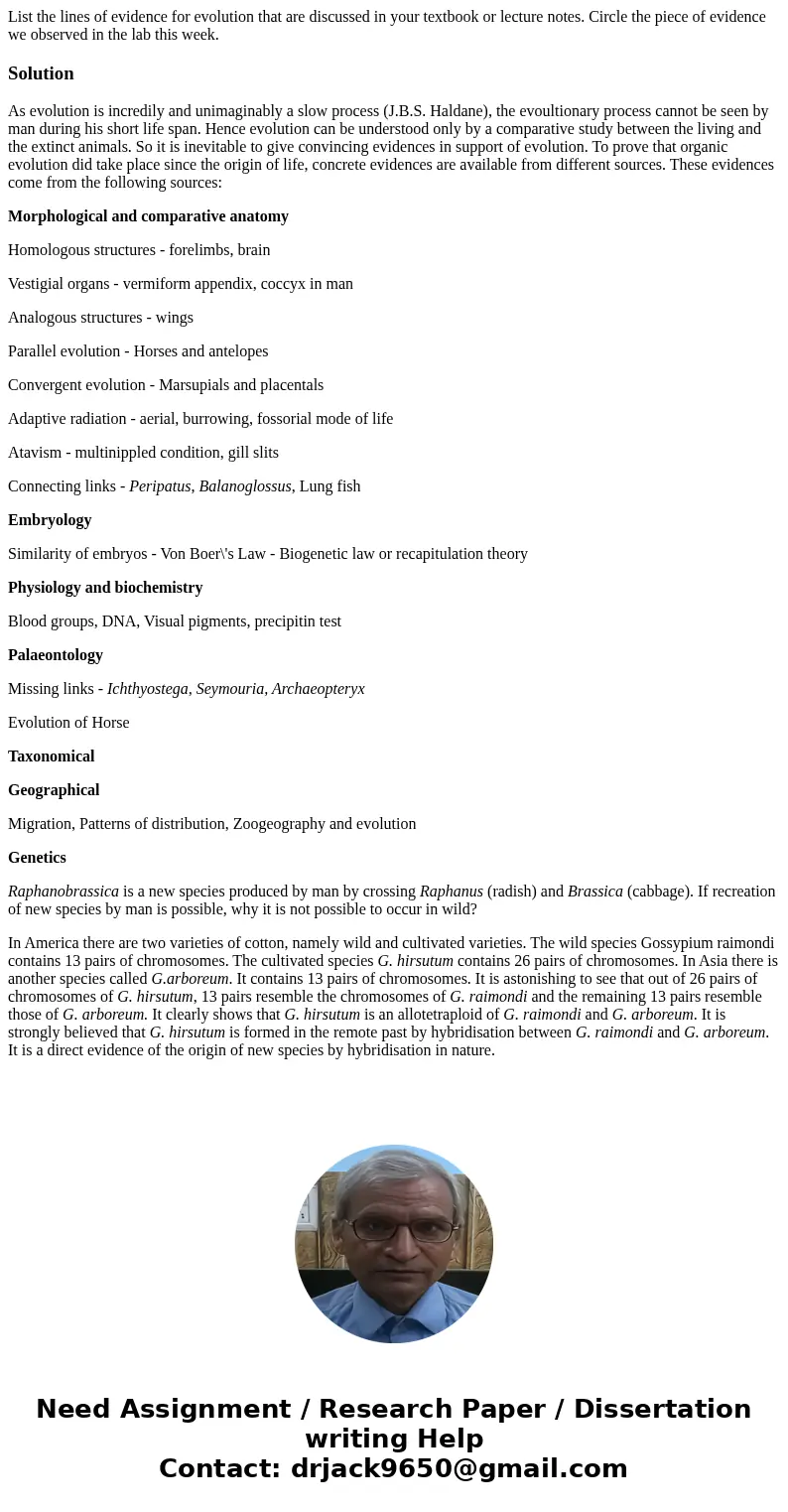List the lines of evidence for evolution that are discussed
Solution
As evolution is incredily and unimaginably a slow process (J.B.S. Haldane), the evoultionary process cannot be seen by man during his short life span. Hence evolution can be understood only by a comparative study between the living and the extinct animals. So it is inevitable to give convincing evidences in support of evolution. To prove that organic evolution did take place since the origin of life, concrete evidences are available from different sources. These evidences come from the following sources:
Morphological and comparative anatomy
Homologous structures - forelimbs, brain
Vestigial organs - vermiform appendix, coccyx in man
Analogous structures - wings
Parallel evolution - Horses and antelopes
Convergent evolution - Marsupials and placentals
Adaptive radiation - aerial, burrowing, fossorial mode of life
Atavism - multinippled condition, gill slits
Connecting links - Peripatus, Balanoglossus, Lung fish
Embryology
Similarity of embryos - Von Boer\'s Law - Biogenetic law or recapitulation theory
Physiology and biochemistry
Blood groups, DNA, Visual pigments, precipitin test
Palaeontology
Missing links - Ichthyostega, Seymouria, Archaeopteryx
Evolution of Horse
Taxonomical
Geographical
Migration, Patterns of distribution, Zoogeography and evolution
Genetics
Raphanobrassica is a new species produced by man by crossing Raphanus (radish) and Brassica (cabbage). If recreation of new species by man is possible, why it is not possible to occur in wild?
In America there are two varieties of cotton, namely wild and cultivated varieties. The wild species Gossypium raimondi contains 13 pairs of chromosomes. The cultivated species G. hirsutum contains 26 pairs of chromosomes. In Asia there is another species called G.arboreum. It contains 13 pairs of chromosomes. It is astonishing to see that out of 26 pairs of chromosomes of G. hirsutum, 13 pairs resemble the chromosomes of G. raimondi and the remaining 13 pairs resemble those of G. arboreum. It clearly shows that G. hirsutum is an allotetraploid of G. raimondi and G. arboreum. It is strongly believed that G. hirsutum is formed in the remote past by hybridisation between G. raimondi and G. arboreum. It is a direct evidence of the origin of new species by hybridisation in nature.

 Homework Sourse
Homework Sourse